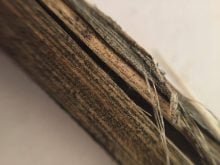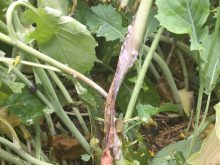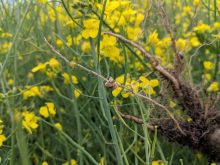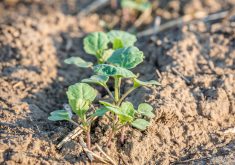Q: What do I need to consider before I try a new canola variety?
A: With this year’s harvest in the bin, it’s time to look ahead to 2024. With every growing season, new technologies and opportunities emerge, so what should be taken into consideration before making the leap and trying something new?
Harvest weather rarely co-operates, and harvest management technology is proving its worth, even on farms that do not straight cut canola. Yield is maximized when canola is swathed or sprayed at optimum seed colour change, so whether delaying swathing or straight cutting, these varieties have a fit.
Read Also

Health hazards are often overlooked risks on the farm
While quite different from the dangers posed by farm machinery, hazards such as loud noise or sun exposure require the same proactive attention, the Canadian Agricultural Safety Association says.
Many new varieties have technology that helps with pod integrity, pod drop and overall pod strength. Pod shatter and harvest management varieties are at a considerably lower risk of shattering but can still experience losses if left unharvested for too long. Individual harvest preferences and practices must be considered when determining what is important in terms of harvest flexibility.
Optimum GLY was introduced in 2023 in the Roundup Ready market. Like TruFlex canola, higher rates of glyphosate can be applied in crop with a longer application window. Having the extended time frame for spraying can provide a significant advantage to help mitigate weather-related risks.
Alternative glufosinate offerings are in the marketplace for LibertyLink canola in 2024. This provides more options but be sure to understand the impacts, such as supplier rebates and/or programming as well as service and technical support.
Weather was highly variable across Western Canada and many areas did have some disease pressure in canola. The fungicide application window for blackleg is well before symptoms are easily observed, so genetic resistance is important. Most varieties are rated R (resistant) and are effective against most blackleg strains in Western Canada. In recent years, genetics have improved, and we now have multigenic clubroot resistance in many varieties, meaning there is more than one resistance source present. This is especially important in areas that have been dealing with clubroot for multiple years as the pathotypes have shifted.
Buteo seed treatment from Bayer Crop Science is proving a valuable tool in early-season flea beetle management. In addition, consideration should be made for cutworms as they can do a lot of damage and can be difficult to control. Many varieties now offer both Buteo and cutworm protection in the form of Fortenza or Lumiposa, so a grower no longer must choose between the seed treatments. Both Fortenza and Lumiposa have the same active ingredient as Lumiderm, just at the registered cutworm control rate.
Every farm operation is different. With so many different canola varieties, trait options and herbicide systems, the choice can be overwhelming. Looking back and determining what were concerns in the past and what will be important going forward will ensure the right varieties are selected.
– Sara Lemmerich, PAg, CCA, is the agronomic innovation manager for Nutrien Ag Solutions in northeast Saskatchewan.















